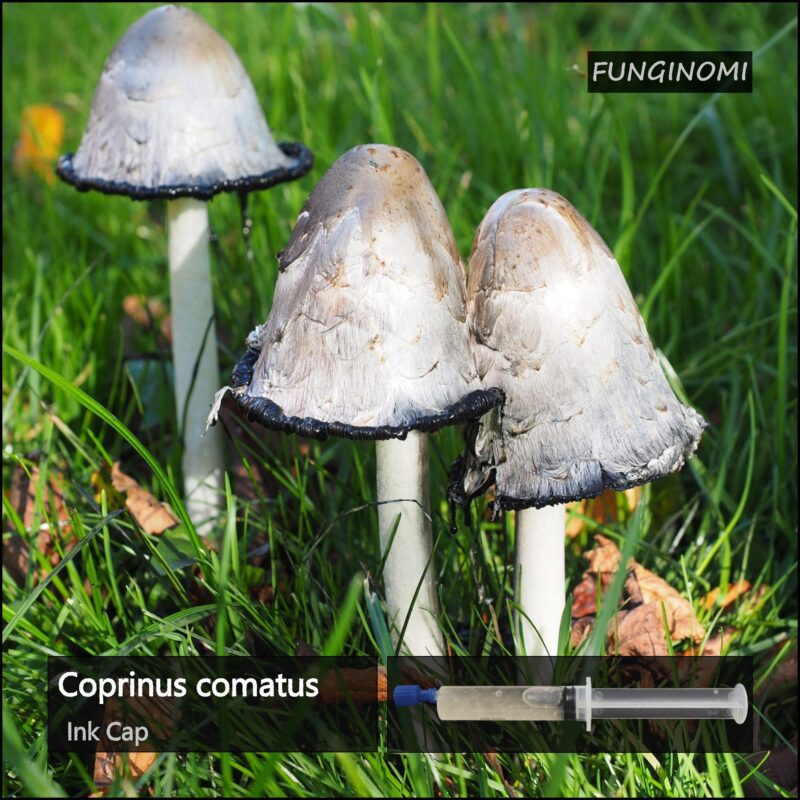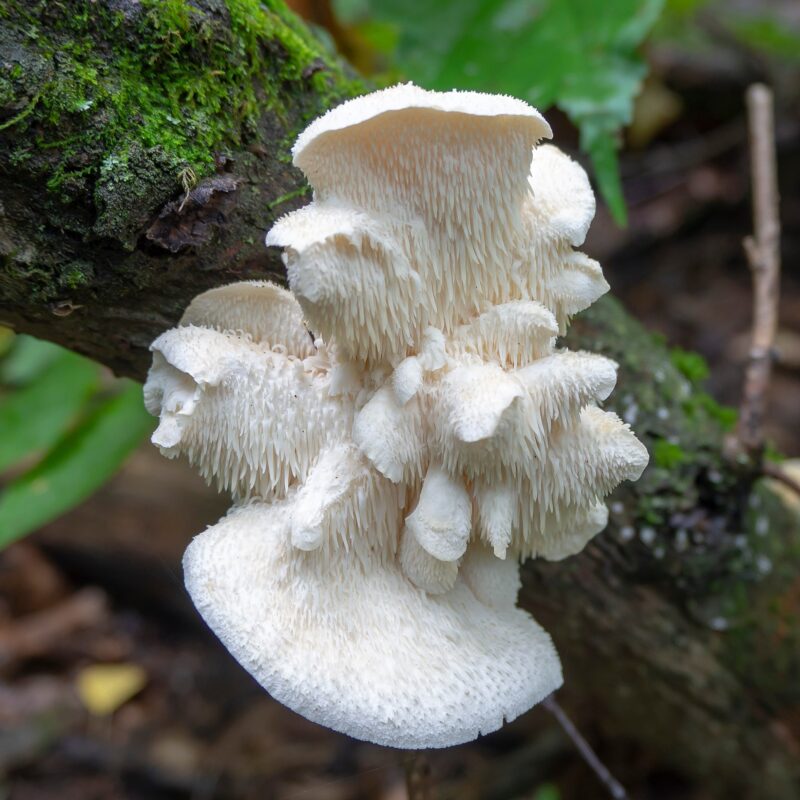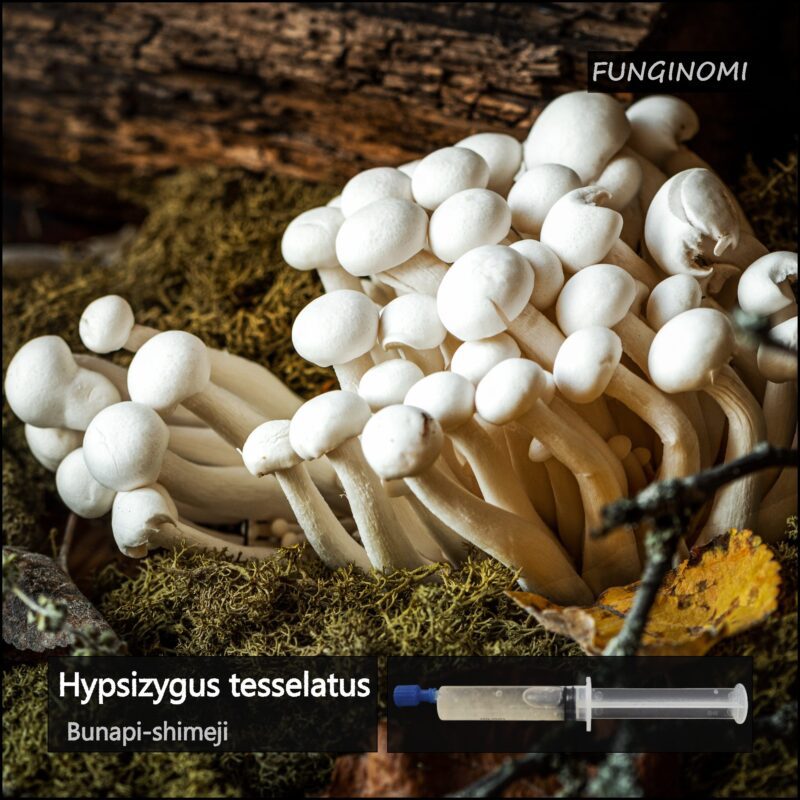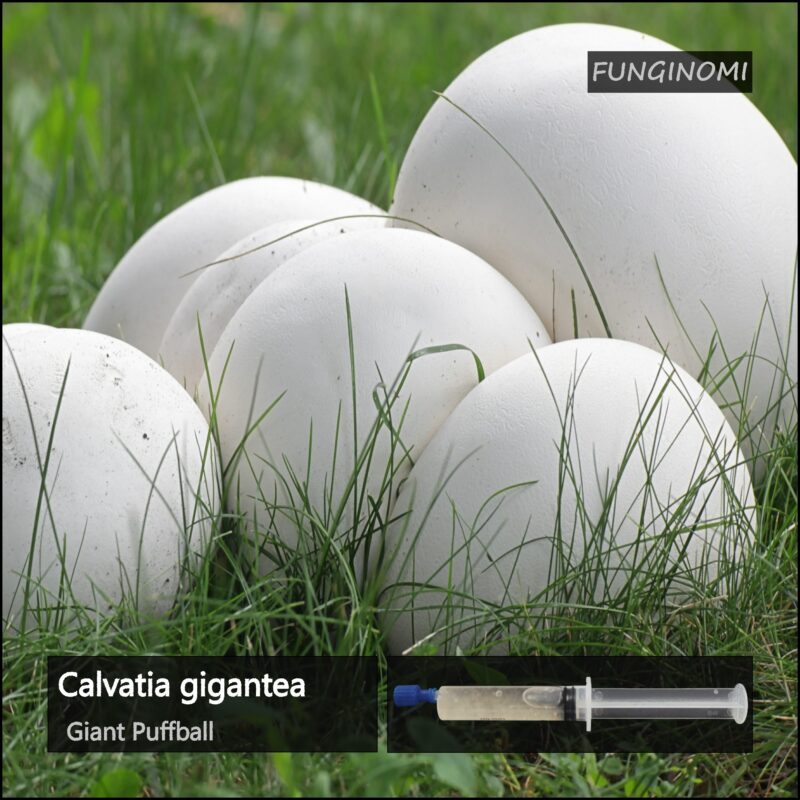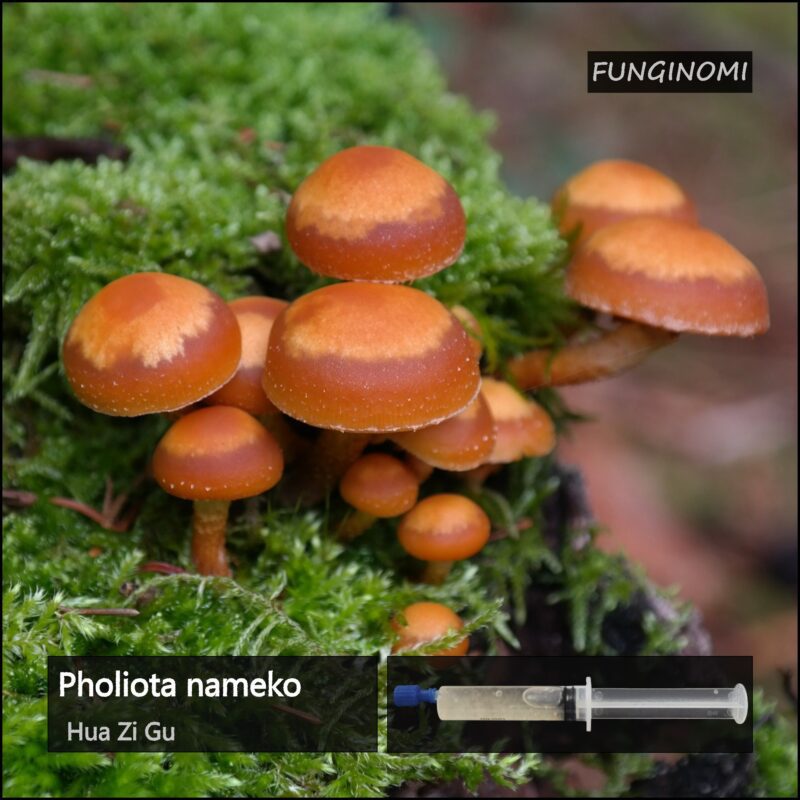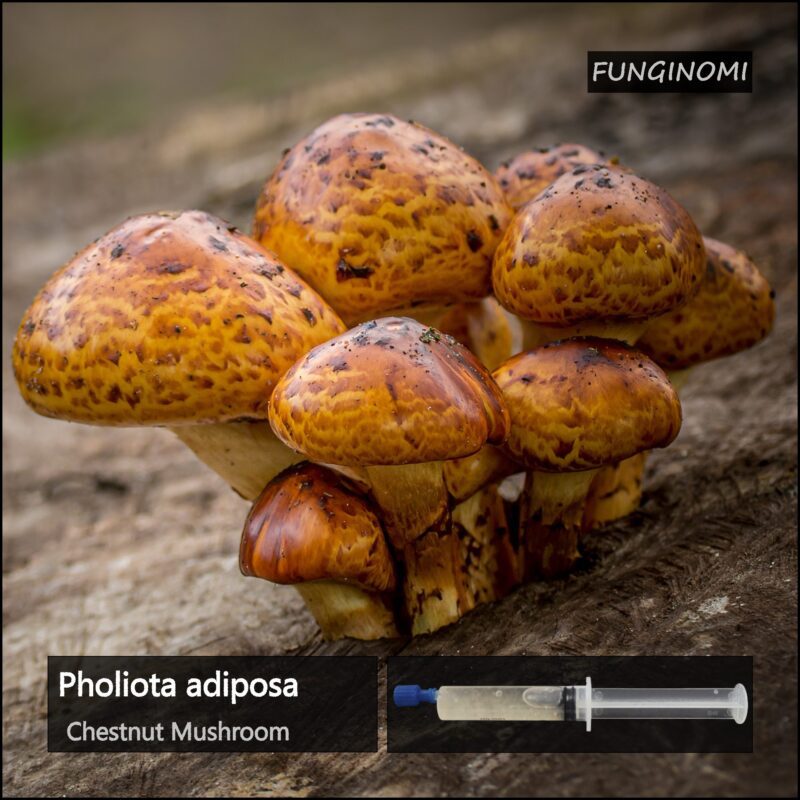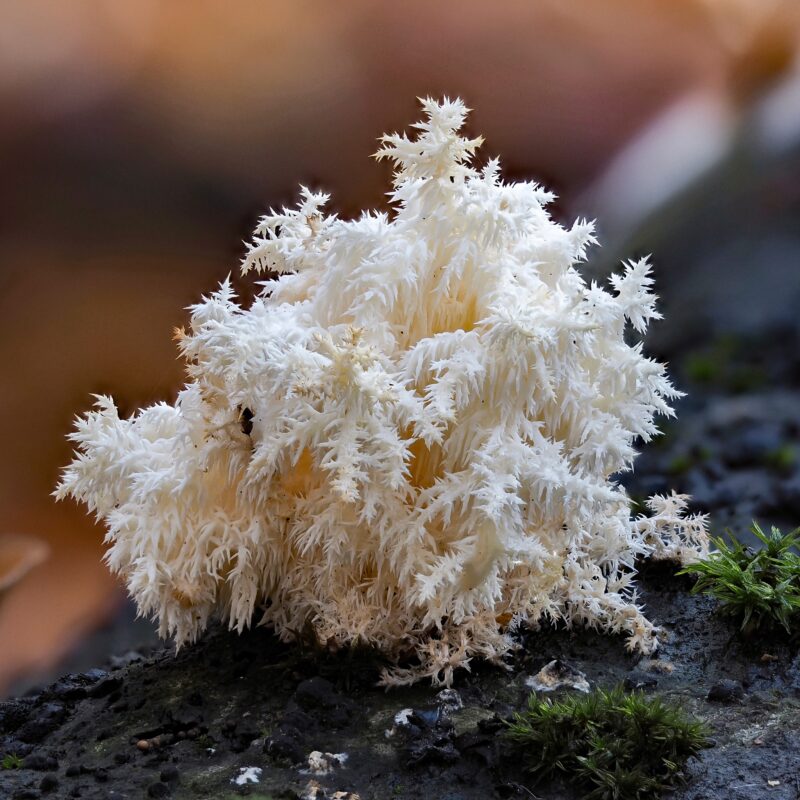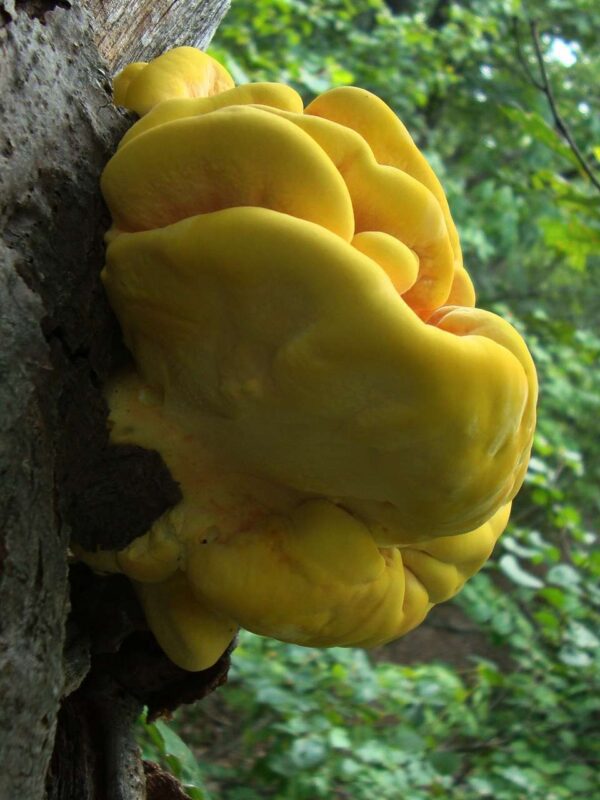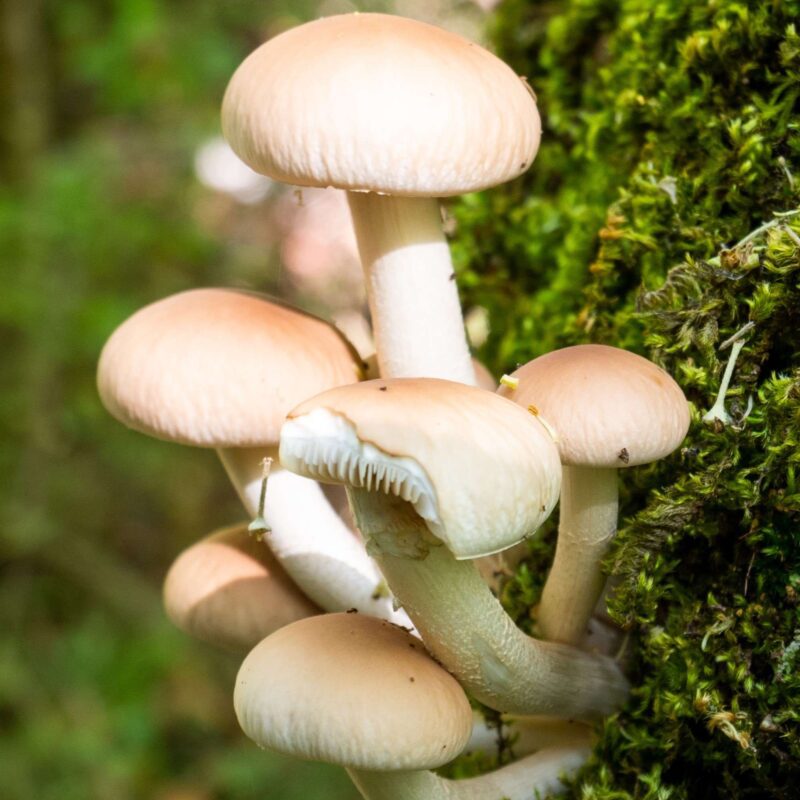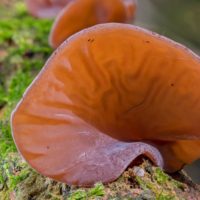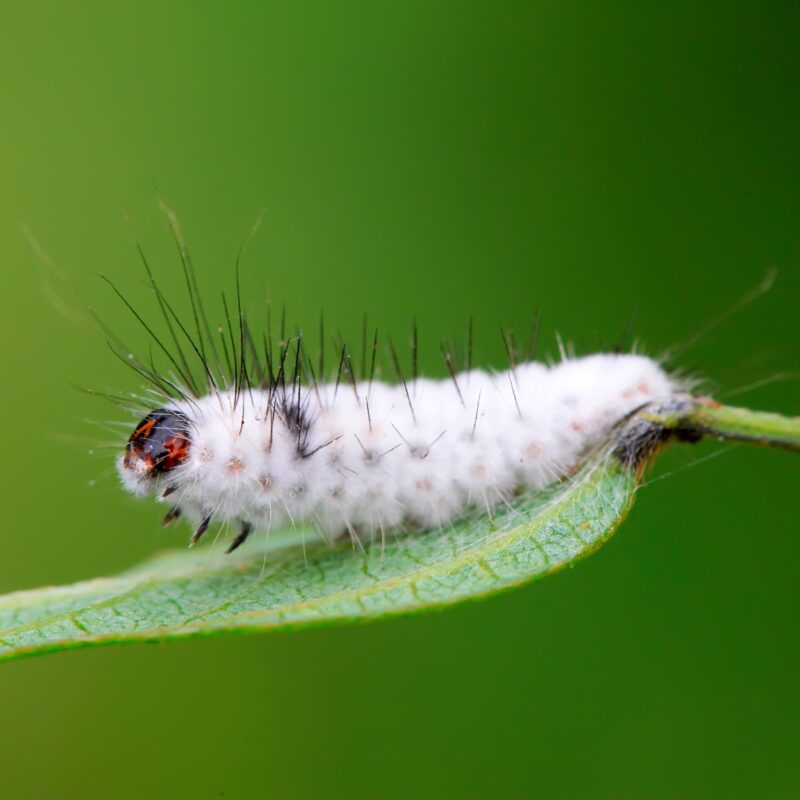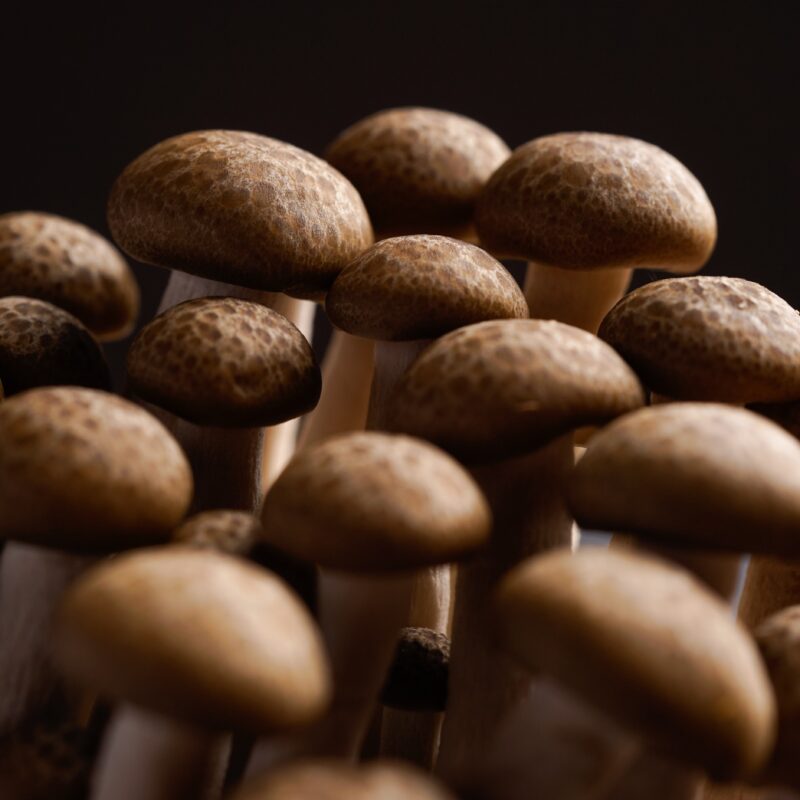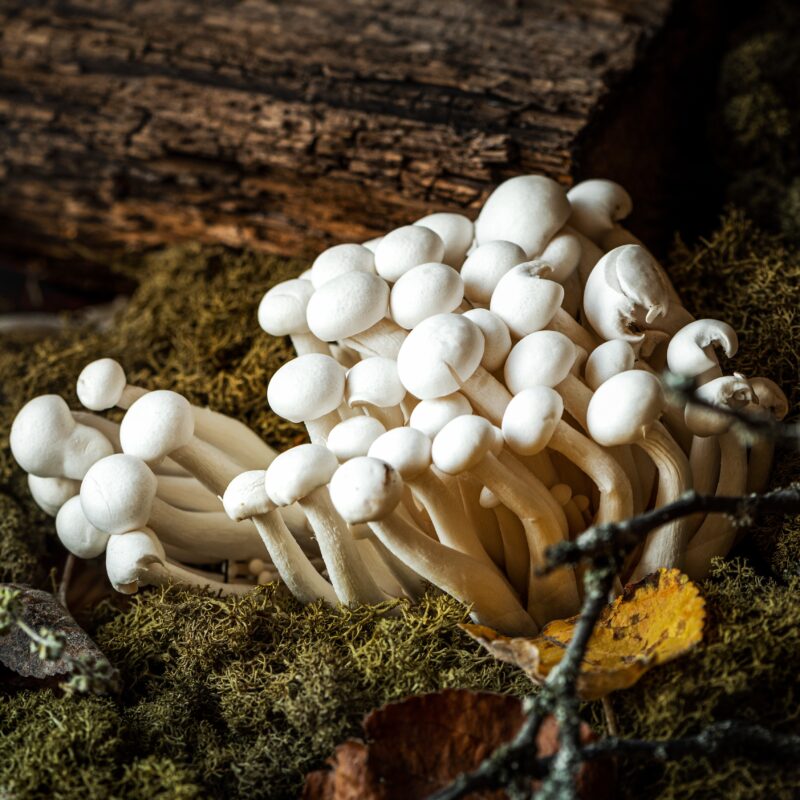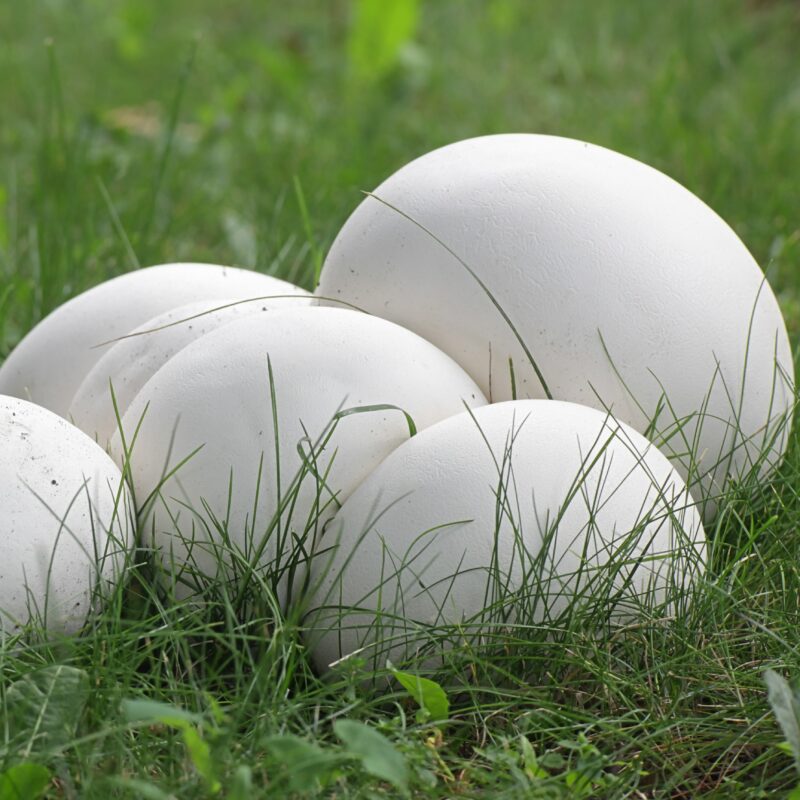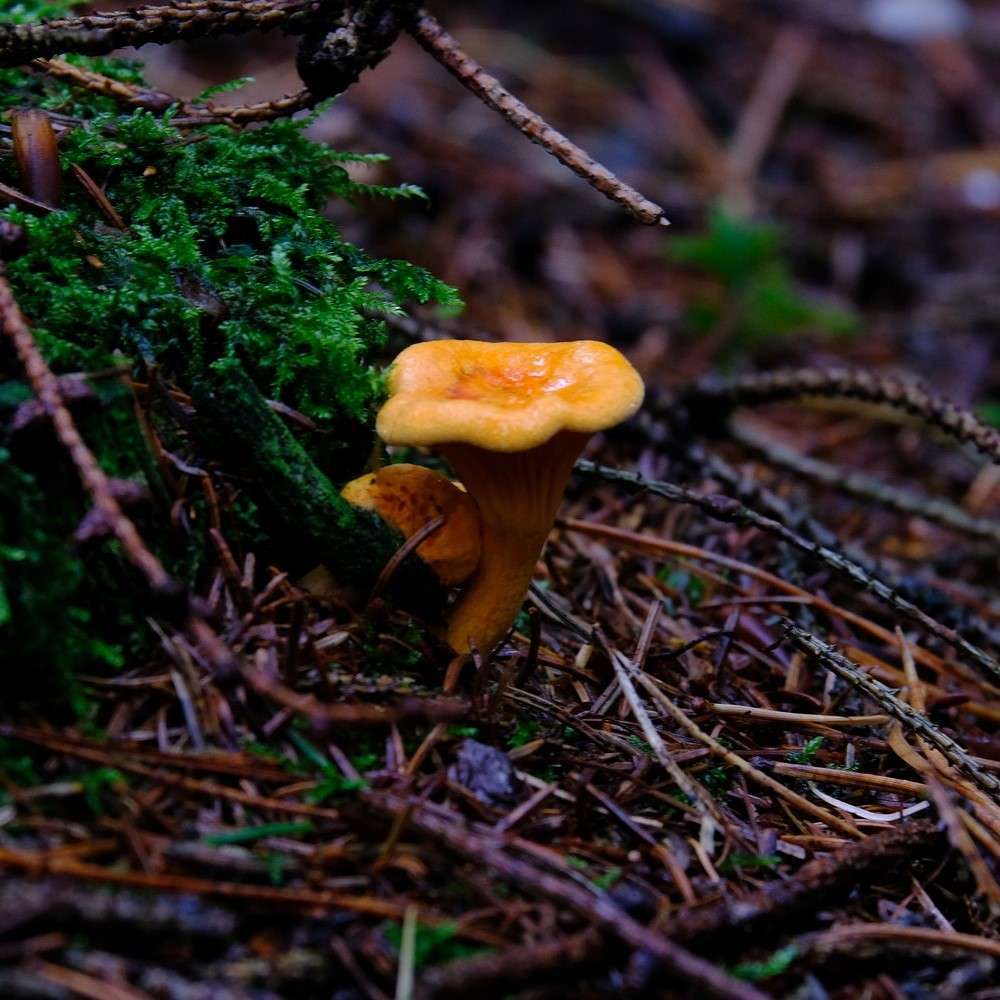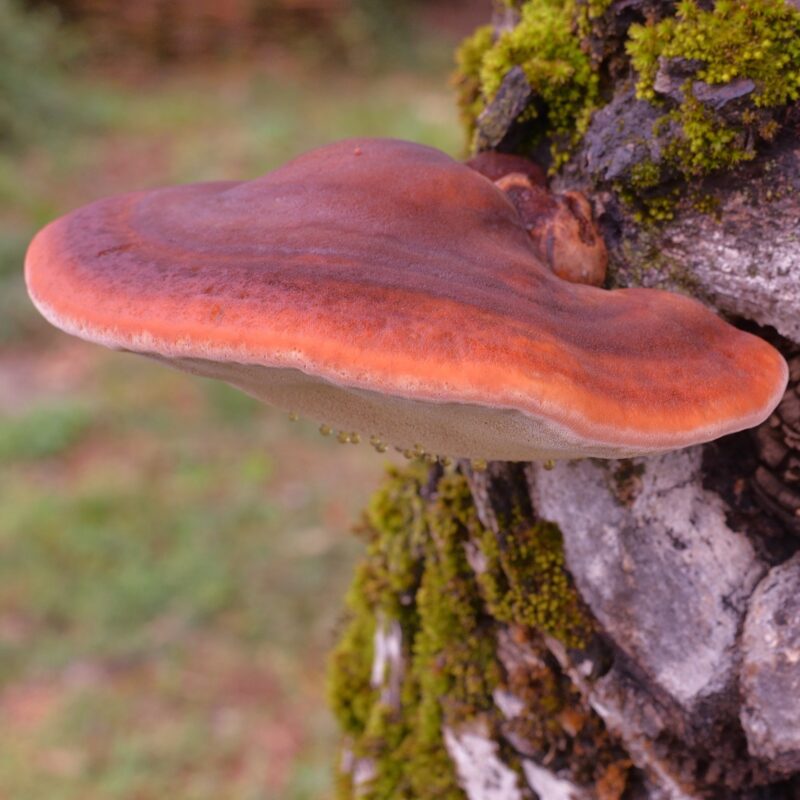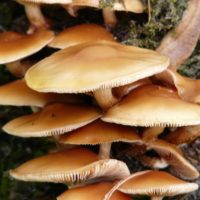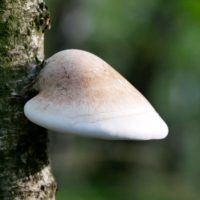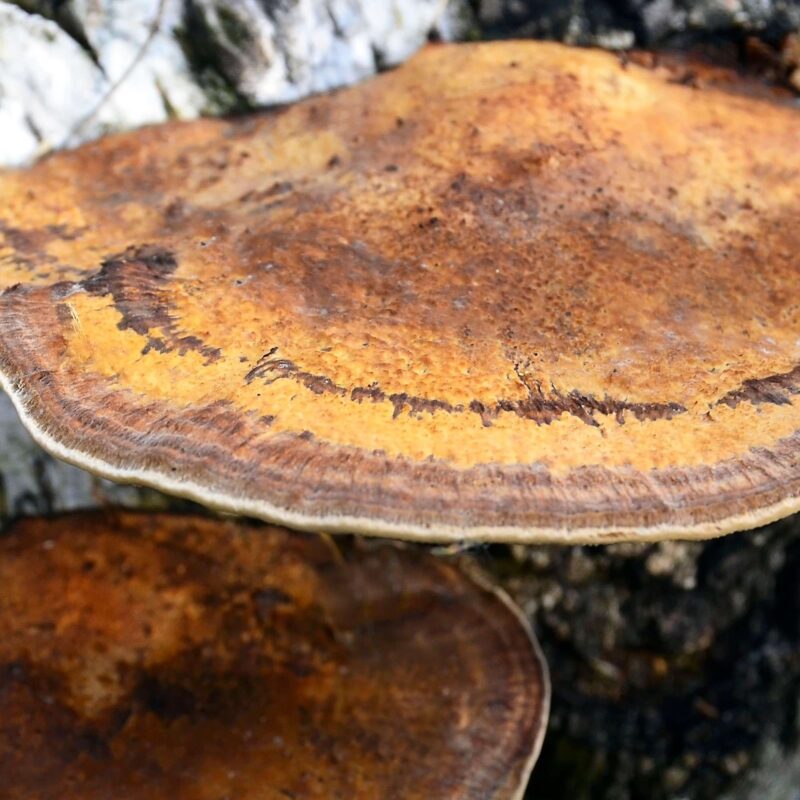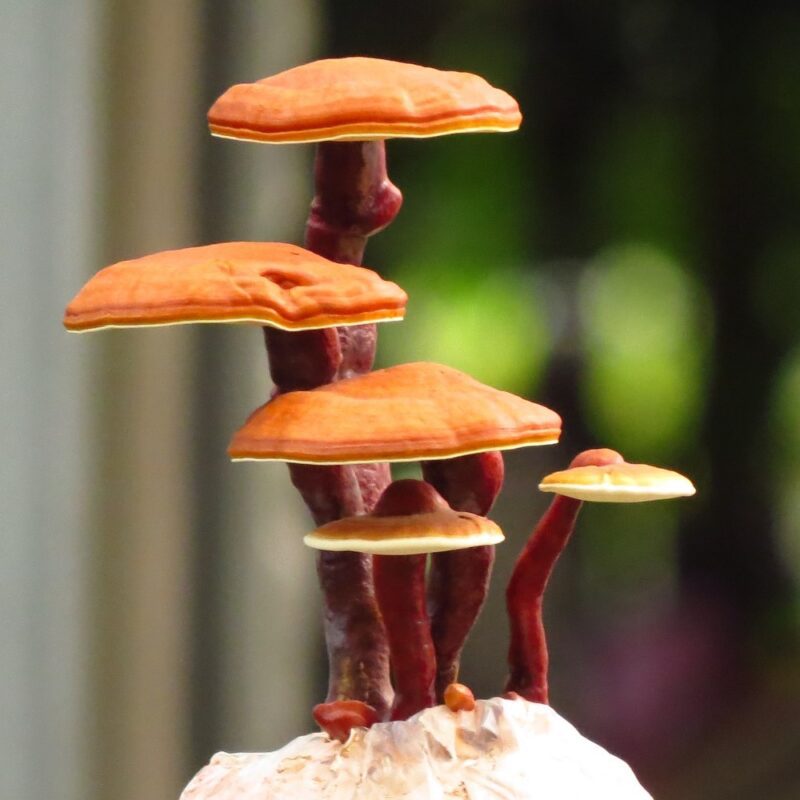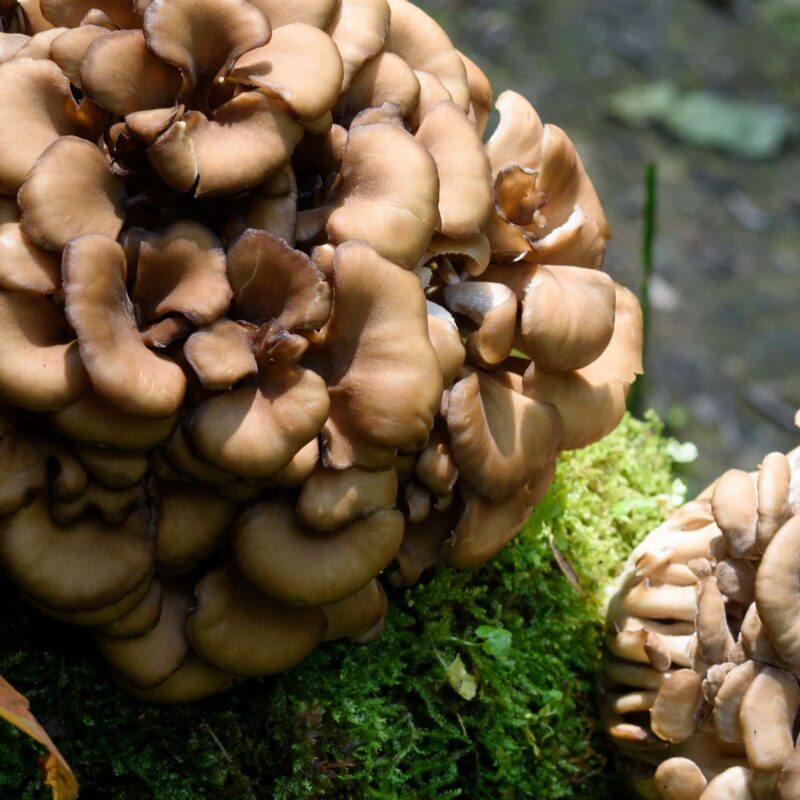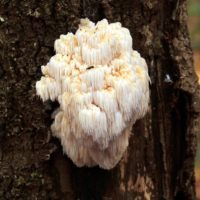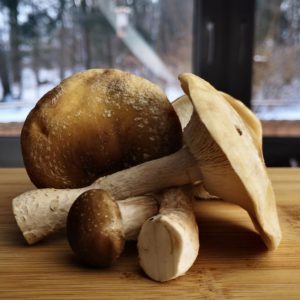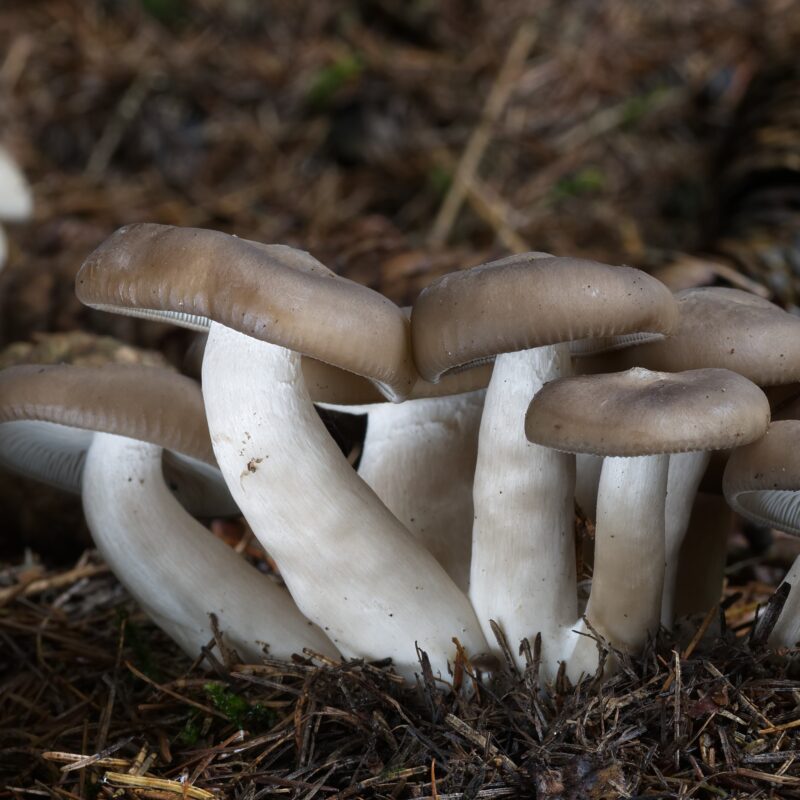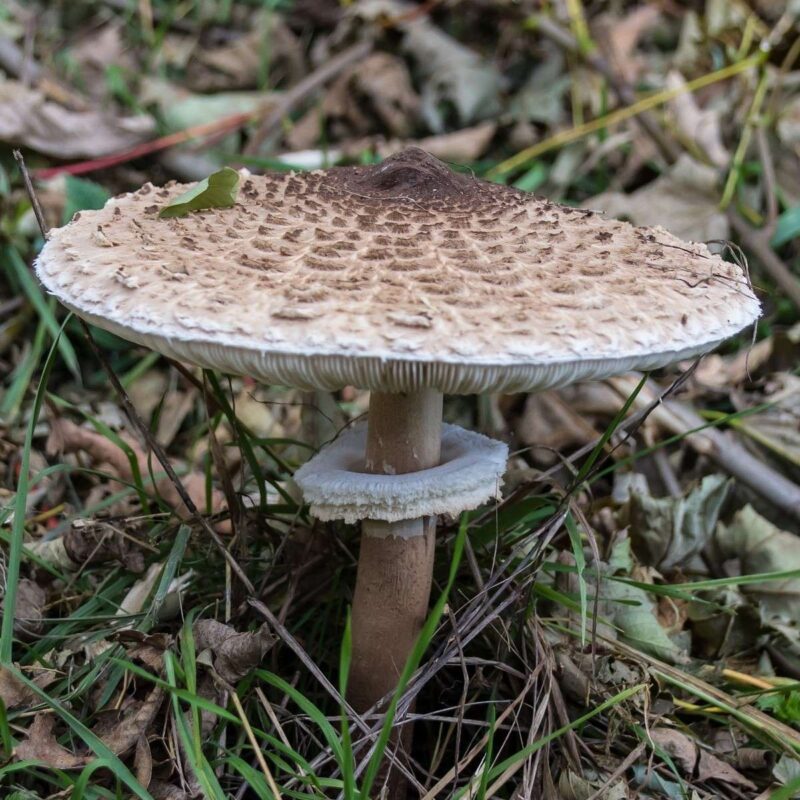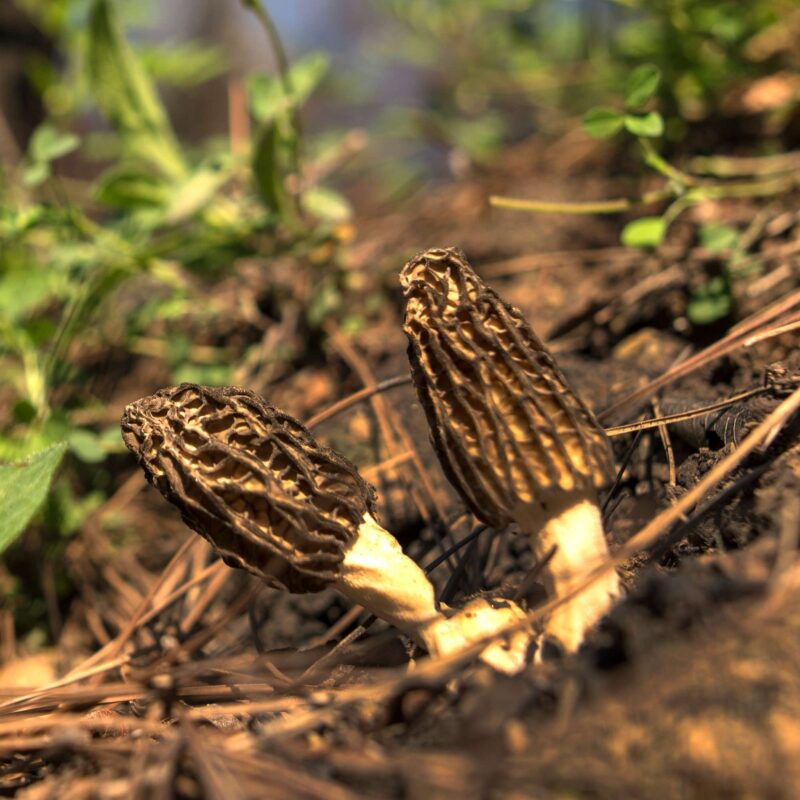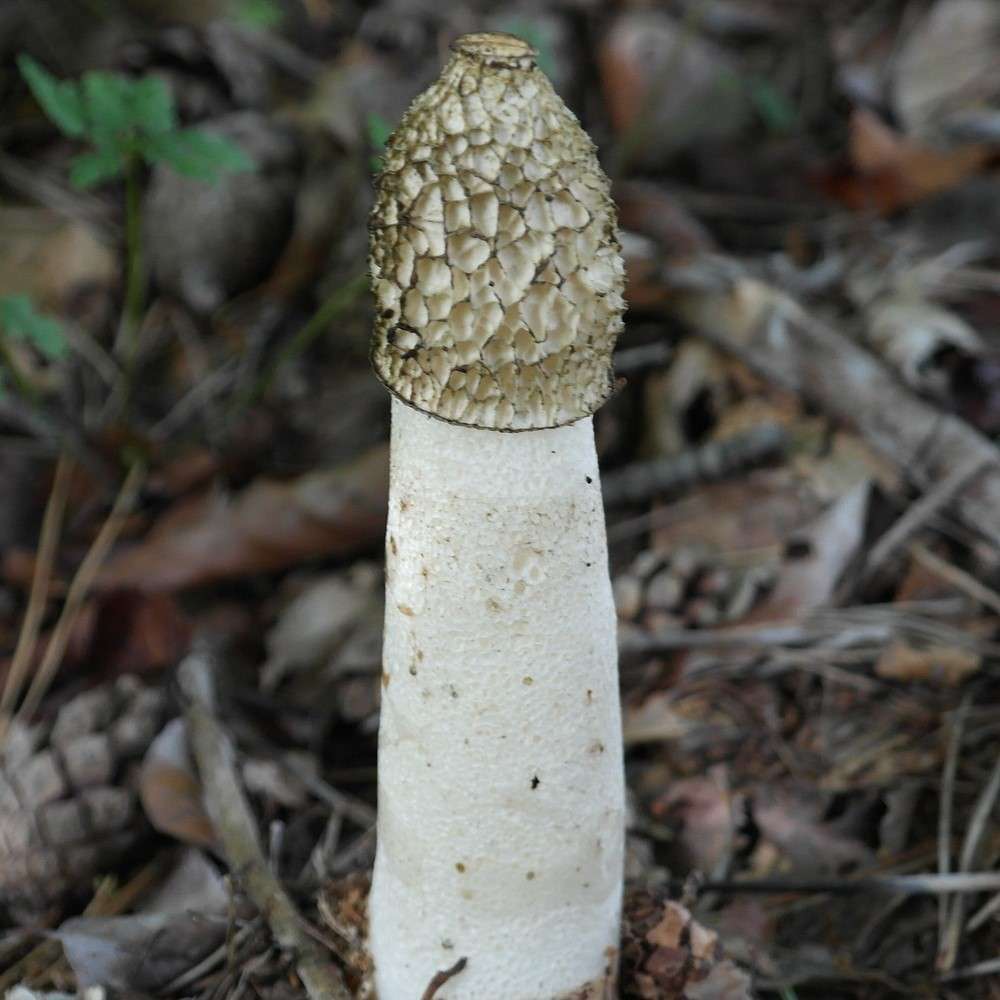Description
Properties
Chicken of the woods (Laetiporus sulphureus) is a species of fungus in the Fomitopsidaceae family. The species was formerly placed in its own family of sulfur porling relatives (Laetiporaceae). Young, juicy specimens are edible and taste like chicken when cooked. This has earned the mushroom the name “Chicken of the Woods” in English-speaking countries.
Infected trees often have entry points for the spores in the form of larger injuries to the protective bark. This is because the fungus enters the tree via wounds. In the trunk, it initially feeds on the decomposition of the heartwood. In the further course, the sapwood is also attacked, which leads to increased susceptibility of the host trees to wind breakage. Thick whitish mycelial lobes are formed in the shrinkage cracks: “mycelial leather”. It can continue to live as a saprobiont for a short time after the host dies, until the soaked portion of the substrate is completely consumed.
Definitely not a beginner’s mushroom, Laetiporus sulphureus requires a sophisticated substrate with not only the right ingredients, but also structure, homogeneity, and Ph. Without mastering the sterile working methods and procedures, your cultivation attempts will remain experimental.
Chicken of the Woods is scientifically referred to as Laetiporus sulphureus. It is a parasitic organism that decays dead trees and causes brown heart rot in live trees. This makes it both a parasitic and saporic organism.
Chicken of the Woods are edible! It is named appropriately because when Chicken of the Woods is prepared correctly, it has the taste an appearance of chicken.
However, with its distinct coloring and fruiting bodies that grow above the soil, Chicken of the Woods mushrooms are easily spotted, even while driving on the highway! They also fruit religiously on the same material if their hypae are left undisturbed. Some mushroom hunters that know where to look for them have reported that they can actually go back to the same tree every year and find their favorite Laetiporus sulphureus fruiting and looking as beautiful as the year before.
Fallen trees will often have up to thirty pounds of this edible treasure, Laetiporus sulphureus growing within the tree’s remains. No other species of mushroom looks quite like this highly conspicuous polypore. It’s characteristic orange-yellow fruiting body makes it easy to spot in the woods, so keep your eyes open for them next time you take a hike in an area where Laetiporus sulphureus is known to grow.
According to an old folk custom, annoying flies and mosquitoes can be driven away by dried and smoked pulp of Laetiporus sulphureus. Lectins are responsible for this insecticidal effect.
There are observations that sulfur spores grown on yew or black locust trees, for example, can cause vomiting and diarrhea in sensitive individuals. Taste can also be affected by the host trees. Sulfur sporophylls growing on oaks can sometimes taste “a bit tart” due to their tannic acid
The water content in the fruiting bodies of Chicken of the woods varies from 72.69% to 66.67%, depending on the particular temperature and relative humidity during the growth phase. The aromatic flesh of L. sulphureus is rich in carbohydrates such as trehalose, mannitol and fructose. It also contains the free amino acids histidine, isoleucine, leucine, lysine, methionine and threonine,[16] the vitamins vitamin B7, vitamin B3, vitamin B12 and vitamin B5, vitamin E and vitamin D. Unsaturated fatty acids are linoleic acid with 63.27% and oleic acid with 14.52%, in addition to the saturated fatty acid palmitic acid with 14.52%. Other fatty acids are present in much smaller quantities. Important organic acids are malic acid, citric acid, ascorbic acid, tartaric acid, malonic acid, succinic acid, oxalic acid, fumaric acid and quinolinic acid.
In addition to general nutrients, the pulp contains trace elements, secondary bioactive substances, e.g., phenols, triterpenes, lectins, polyene pigments, laetiporic acids, the depsipeptide beauvericin, and melanins and naphthalene derivatives.
Historically, L. sulphureus has been used in traditional Asian and European folk medicine for the treatment of inflammatory diseases, cough, gastric cancer, gastrointestinal disorders, cardiovascular diseases, and rheumatism due to its many pharmacological properties.
Substances with high antioxidant potential include oxalic acid, the polysaccharide laetiporan A, linoleic acid, flavonoids, and other phenolic compounds[.
Cultured strains show a broad spectrum of antimicrobial activity against a variety of human pathogenic Gram-negative and Gram-positive pathogens and against methicillin-resistant Staphylococcus aureus. Beauvericin possesses antimicrobial and insecticidal activities. Antifungal effects have been demonstrated against Candida albicans, Aspergillus niger, Botrytis cinerea, Penicillium gladioli, and Sclerotinia sclerotiorum.
Several compounds of Laetiporus sulphureus have apoptotic and antitumor effects. The triterpenes and flavonoids such as ergonol and demethoxyegonol have cytotoxic effects in addition to antioxidant ones. (±)-Laetirobin specifically inhibits the division of cancer cells. Lectins inhibit protein biosynthesis of lung and breast cancer cells.
1. Growing
Growing Procedure
Laetiporus sulphureus grows sterile on a substrate of hardwood sawdust with rich aggregates.
Avoid using black locust and yew wood, the toxins from the wood are absorbed and can cause intolerance and even symptoms of disease. Woods high in tannic acid, such as oaks, sometimes produce results with a tart under-aroma. A good substrate mixture consists of, for example, birch, poplar or willow chips in various gradations. A high lime content ensures that the oxalic acid released by the fungus to the substrate is neutralized.
As with all porlings, the strategy of allowing Chicken of the woods to form only a single fruiting body leads to the best result.
For fruiting initiation, a cold shock is mandatory.
Growing
Agar Culture Media: MEA
Cropping: 2-5 flushes
Containers for fruiting: Logs, bags of indoor mycelium for greenhouse cultivation
Biological efficience:
Substrates: Large Logs
PH: 6-8
Growing Characteristics
Laetiporus sulphureus is a parasite that mainly attacks old deciduous trees and conifers in forests and parks and causes intensive brown rot. This infestation severely reduces the stability and breaking strength of infested trees and can lead to tree death. In black locust trees, the damage is often limited to the trunk.
Chicken of the woods is a very aggressive wood destroyer. It can only be eaten young, not particularly good, incompatible raw (oxalic acid). With special preparation, it can also be considered a very good edible mushroom = individual taste perception.
Laetiporus sulphureus produces a conspicuous brown rot in the wood. As substrate it prefers hardwoods with color core. It can attack oaks, black locust, Prunus species, poplars and willows; in Central Europe, conifers (larch) are colonized less frequently and rather at higher altitudes. In Central Asia, according to Dörfelt, this fungus parasitizes mainly in larch species; conifers are also attacked in North America. The sulfur fungus can also colonize other deciduous trees.
S
|
P
|
F
|
|
|---|---|---|---|
Temp °C |
16-22 | 12-21 | 12-19 |
Relative Humidity % |
80-100 | 85-95 | 90-95 |
Duration d |
16 | 7-14 | 16 |
CO2 ppm |
>5000 | 500-1000 | <2000 |
FAE per h |
0-1 | 1-2 | 4-5 |
Light lux |
– | 500-1000 | 500-1000 |
Natural Habitat
Laetiporus sulphureus is typically found in the midwest states in the U.S., and is also largely distributed east of the Rocky Moutain Range, as well as in Europe. The large black dot seen in the photo to the right is La Crosse, Wisconsin, which is were I am basing all my research from, and a common habitat for Chicken of the Woods. Other species of the same genus can be found in California, such as Laetiporus gilbertsonii, and Laetiporus cinncinatus.
The fruiting bodies of Laetiporus sulphureus are commonly found in early spring and fall. They favor rainy conditions, as the rain helps to spread their haploid spores, with hopes that those spores will be able to fuse and generate more organisms. The fruiting bodies will sometimes be found in the summer, especially if it is a cooler and/or wetter year, but will never be found in the winter months. The cold temperatures are not favorable for the fruiting bodies to be growing above the substrate. It’s is important to note that while you cannot always see the fruiting bodies of the organism, the white, single septate hypae and the rest of the organism are always present in the soil and decaying tree substrate.
Naturally, Chicken of the woods is found in riparian forests and in wetter mixed oak forests. In addition, it is found in other types of forests, orchards, parks and on street trees.
Laetiporus sulphureus has been recorded on all continents, and in the Holarctic it is most common in warmer and temperate areas. According to Krieglsteiner, the European distribution area corresponds to that of the oak. In Germany it is relatively densely distributed.
A common species of porling throughout the northern hemisphere, it often impresses the finder by its sheer size and rich yellow color.
-grows on deciduous trees
-at higher altitudes also larch, and the very rare needle sulfur polypore (LAETIPORUS MONTANUS) on conifers (mainly spruce, spruce… ), both species are parasitic or subsequently decomposed, caused Brown rot, annual
Affiliate Partner
2. Identification
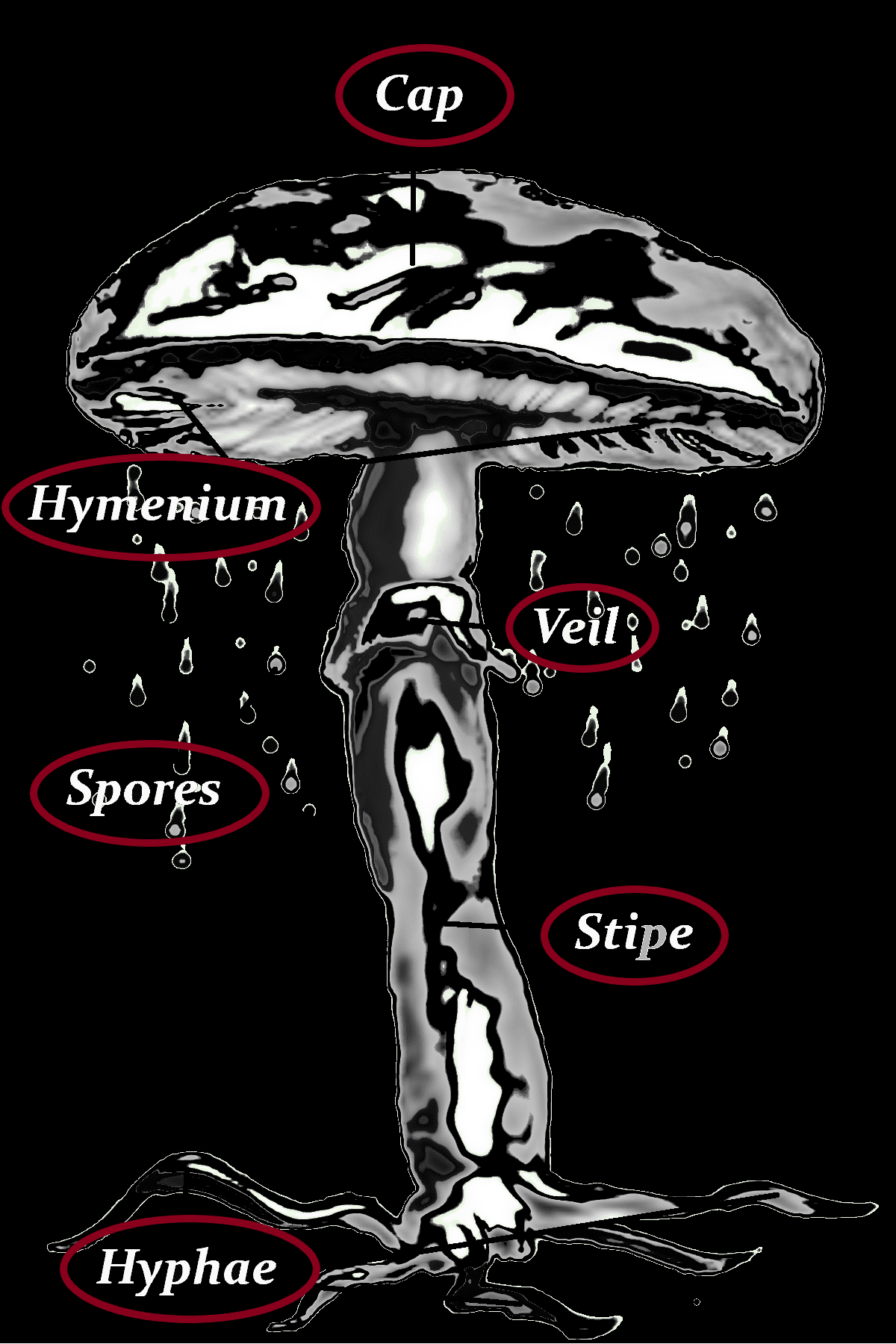
Cap
-5-30 (50) cm Ø
-orange, light yellow, yellow-brown to pale yellowish
-old white
-fan-shaped
-imbricated
-velvety
Hymenium
-pores
Danger of confusion
Laetiporus Montanus, Hapalopilus Rutilans, Auriporia Aurulenta, Pycnoporellus Fulgens, Meripilus Giganteus, Bondarzewia Mesenterica
Stipe
–
Hyphae
–
Spores
-white
-5.5-7 x 3.5-5 µm
-thin-walled
-ellipsoidal
-smooth
-walls 1-2 µm thick
-connecting hyphae 4-14 µm wide
-buckles absent
-generating hyphae weft 4-7 µm wide
-tubular and unbranched
Veil
–
3. Consuming
Gourmet
The taste of properly prepared Chicken of the Woods is often described as grainy or meaty, hence the Chicken of the Woods nickname. However, it should be duely noted that Laetiporus sulphureus that are found growing on Conifer Trees like pine, hemlock, blue spruce, fir, or tamarack should not be eaten. As with eating anything from the wild, you should be careful about what you decide to take home with you. Make sure that you know you have a true Laetiporus sulphureus specimen before you decide to cook it up for dinner.
Laetiporus sulphureus is edible only when cooked when very young. Only the 4 cm of the outer fringe should be used, as it quickly becomes tough and tasteless. In Thailand, North America and Japan, the common sulfur mushroom is considered a delicacy because of its special taste of crab or chicken meat. It is therefore very popular in vegan cuisine. The sulphur fungus is inedible raw. If the mushroom grows on a poisonous tree, toxins can be transferred from it to the mushroom, for example, taxine from yew trees.
Flesh
-yellow to old white
-soft, elastic, hard over time
-dry, brittle, hard over time
Taste
Sour, old like cheese, on hardwood eg beech, oak, often bitter. They always have a mild flavor in willow and birch.
Smell
aromatic, tart, mushroomy, fruity
Nutritional content
| Eiweiß | 10,61–21,00 g |
| Kohlenhydrate | 64,90–74,47 g |
| Fett | 1,23–2,96 g |
| Kalium | 18500 mg |
| Calcium | 4200 mg |
| Magnesium | 2100 mg |
| Natrium | 285 mg |
| Chrom | 58,3 mg |
| Mangan | 30,7 mg |
| Blei | 24,5 mg |
| Kupfer | 22,7 mg |
| Nickel | 22,7 mg |
| Cadmium | 0,68 mg |
| Silber | 0,26 mg |
| Aluminium[13] | 53,9 mg |
| Bor | 16,4 mg |
| Cobalt | 1,2 mg |
| Zinn | 4,5 mg |
| Molybdän[14] | 0,07 mg |
| Quercetin | 11,37 mg |
| Catechin | 14,04 mg |
| Gallussäure | 28,57 mg |
| Chlorogensäure | 22,61 mg |
| Kaffeesäure | 20,07 mg |
| p-Cumarsäure | 18,48 mg |
4. Data med, edible
other names
| Afrikaans |
Swawelrakswam
|
| Bulgarisch | Сярна гъба |
| Chinesisch (traditionell) | 硫色絢孔菌 |
| Chinesisch (traditionell) | 黃芝 |
| Chinesisch (vereinfacht) | 硫磺菌 |
| Chinesisch (vereinfacht) | 黄芝 |
| Deutsch |
Gemeiner Schwefelporling
|
| Dänisch |
Svovlporesvamp
|
| Englisch |
Bracket Fungus
|
| Englisch |
Crab of the woods
|
| Englisch | Ojishtad |
| Englisch |
Sulphur polypore
|
| Englisch |
chicken of the woods
|
| Englisch | sulfur shelf |
| Englisch | sulphur shelf |
| Englisch |
sulphur shelf mushroom
|
| Estnisch | vääveltorik |
| Estnisch | väävlik |
| Finnisch | rikkikääpä |
| Französisch |
Polypore soufré
|
| Galizisch | Carne de pita |
| Japanisch | マスタケ |
| Litauisch |
Valgomoji geltonpintė
|
| Miwok | Elmayu |
| Niederländisch | Zwavelzwam |
| Norwegisch | svovelkjuke |
| Polnisch |
Żółciak siarkowy
|
| Portugiesisch |
Galinha do Bosque
|
| Rumänisch | Iască galbenă |
| Russisch |
Трутовик серно-жёлтый
|
| Schwedisch | Svavelticka |
| Spanisch | Hongo-pollo |
| Spanisch |
Pollo del bosque
|
| Spanisch |
pechuga de pollo
|
| Tschechisch |
sírovec žlutooranžový
|
| Ukrainisch |
Трутовик сірчано-жовтий
|
| Ungarisch |
Sárga gévagomba
|
| Wissenschaftl. Name | Boletus tenax |
| Wissenschaftl. Name |
Laetiporus sulfureus
|
| Wissenschaftl. Name |
Laetiporus sulphuratus
|
| Wissenschaftl. Name |
Laetiporus sulphureus
|
| Wissenschaftl. Name |
Laetiporus sulphureus sulphureus
|
| Wissenschaftl. Name |
Polyporus sulphureus
|
| Wissenschaftl. Name |
Sporotrichum versisporum
|
other names
Schwefelporling, Eierporling, Gemeiner Schwefelporling, Laubholz- schwefelporling Chicken Of The Woods, Crab Of The Woods, Sulphur Polypore, Sulphur Shelf, Gemeiner Schwefelporling, Laetiporus Sulphureus (Syn. Sulphurina Sulphurea, Tyromyces Sulphureus, Sporotrichum Versisporum, Polyporus Sulphureus Var. Albolabyrinthiporus)
| Kingdom | Fungi |
|---|
| Division | Basidiomycota |
| Class | Agaricomycetes |
| Order | Polyporales |
| Family | Polyporaceae |
| Genus | Laetiporus |
| Species | L. sulphureus |
| Ecology | Saprotrophic / Parasitic |



